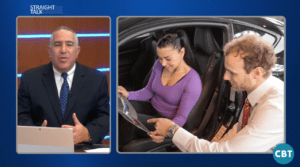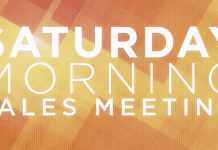On today’s episode of Straight Talk, David Lewis of David Lewis and Associates discusses the pros and cons of a practice that started in the 1970’s that weakens the sales presentation and could lessen the chance of a potential sale: the planned demo route.

Video Transcription:
Hello everyone and welcome to this week’s episode of Straight Talk. I am your host David Lewis and this is the program where you will get straight answers and ideas that want help you reach higher in your goals for success in the retail automotive industry.
Today I want to talk with you about the pros and cons of a practice that started in the 1970’s in this business and is still being used today in most dealerships. This technique weakens the sales presentation and, in my opinion, lessens the chance for a successful sale.
The practice I am speaking of is the Planned Demo Route. This is a practice that became popular in the 1970’s during a time when cars were less reliable and they didn’t come from the factory with gas in their tanks, and there was no such thing as a cell phone in those days.
That way if something did happen like the car stopped running or ran out of gas, they could wait for the next salesperson to come by on the same demo route and you could flag them down and get a ride back to the dealership.
This method was designed for the salesperson, not the customer. It was made to be all right turns that would be for a short drive around a few blocks taking all right turns that would take them right back to the dealership. Its primary purpose was so the salesperson could check the box when they came back to the dealership that verified that they took the customer on a demonstration drive.
That however is not really a demo ride. A demonstration drive should be designed so the customer can experience the vehicle for themselves under their driving habits the way they want to drive. A planned demo ride is too short. It lasts at most about 10 – 12 minutes and then back to the dealership.
This doesn’t give the customer a chance to experience the vehicle enough to take mental ownership of the car. They need to drive it enough to make sure it will meet their expectations so that the salesperson doesn’t waste his or her time going forward with the sales process on a vehicle that is not right for the customer.
A demo ride should be at least half an hour long so the customer has a chance to fall in love with the car. They should be encouraged to drive wherever and however they want to drive so they can experience the vehicle in a way that relates to their own driving patterns.
There are two ways of setting up a demonstration drive like this:
First, ask the customer if they are familiar with the area and if they have a special place where they would like to go, hoping that it would be far enough away for a good demo ride.
The second way is to pick a place that is a nice landmark area like a mall or a park or some place they would be familiar with that is at least 15 miles away and somewhere they would know how to get to from your dealership.
Let them drive at their own convenience where they want to go and on the roads they want to use to get there. Some may choose to drive on the highway others may choose back roads where there’s not so much traffic. Whichever way they want to go let them choose and let them drive there however they want to drive.
This is so different from a planned demo route where they pull out of the dealership and take a right and they drive a few blocks and take another right and do that several times until they turn right back into the dealership. That doesn’t give them any chance to experience what the car has to offer and doesn’t give them a chance to take mental ownership of the vehicle.
So as promised, now comes the most important part. And this is especially good if it is a couple taking the demonstration drive. Once they leave the dealership and are headed in that direction toward where they want to go, you sit silently in the backseat and don’t ask any questions or say anything unless the customers ask you a question about something they need to know.
If you can sit silently in the backseat there’s a good chance they will start talking to each other about what they like most about the car. In some cases, they may actually forget you are there and start talking back and forth about the vehicle, giving you all the information you need to know about what to emphasize during your external presentation and how to close them on this vehicle when you come to the closing table.
As I mentioned in an earlier program, we talk too much during the sales process. This is especially true during the demonstration ride where we are usually dropping all kinds of trial closes on the customer instead of listening to them talk and formulating our plan for the next step in the process.
Most salespeople will start peppering them with questions and statements like: “where do you plan to go for your first trip in your new car?” or, “wouldn’t this car look great sitting in your driveway? “
The more you talk the less chance the customer has to experience the vehicle for themselves. The more you start selling and telling the greater the chance is that you will reignite their defensiveness and they will begin to start thinking of objections to your sales process to make sure you aren’t just trying to say whatever it takes to make a sale.
Most people in this business see the demonstration drive is the pinnacle point of the sales presentation. But how can it be that if it is a 10 minute trek around the block and then back to the dealership.
Remember, your goal is to inspire the customer with the idea that you are different and unique from what they expect and from what they have experienced with other car salespeople.
This kind of demonstration drive will catch most people pleasantly off guard and minimize the idea that you are like every other salesperson out there and are only doing the same preplanned pitch that you do with every customer in order to get them to buy a car that day.
If the customer is truly in the market for a vehicle and you treat them in this way during the demonstration drive, you stand an excellent chance of setting yourself apart from the competition and giving them a car shopping experience like they have never had before.
Well that’s it for today folks. I hope you will take this message seriously and use this kind of demonstration drive with your next customer. And as always if you would like a complimentary copy of my books just send me an email at dlewis@davidlewis.com and I will ship them out to you immediately.
Goodbye everyone.




